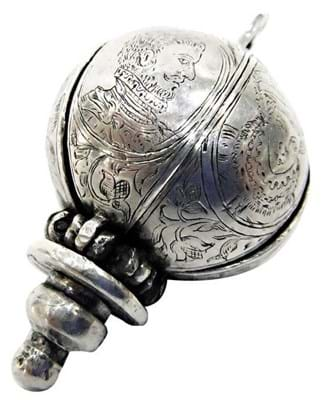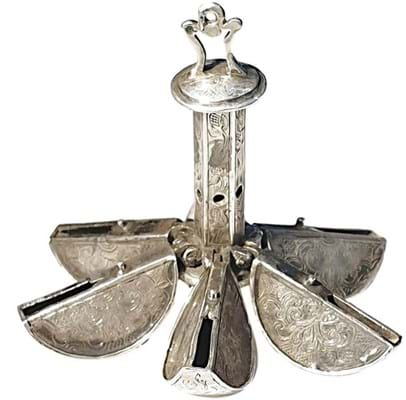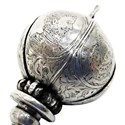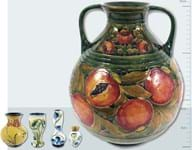Some are almost certainly English: the metal content of a handful of examples tested for impurity analysis at the London Assay Office has proved entirely consistent with other proven silver made in England between 1500-1600.
All follow the same spherical form, with a finial unscrewing to release four or six segments or loculi that are perforated with small holes to receive and let out the scent. Six loculi would allow for six different scents.
Used against infection and the stench of 16th century urban life, they were worn as personal adornments, often on chains around the neck or to a gold around the waist.
A period recipe for the perfume requires an ounce of the purest garden mould, steeped seven days inmotherless [pure] rose-water to be worked up with the best labdanum [essential oil], benjamin, both storaxes, ambergris, civet and musk. It concludes: This will make you smell as sweet as my lady’s dog.
As evocative reminders of the Tudor age, pomanders have been collected since at least the Victorian era – fuelled in part by the cult of Mary Stuart. The last act of the Queen of Scots at Fotheringhay Castle in 1587 had been to remove a pomander from around her neck.
The example c.1580 offered at Cotswold Auction Company in Cirencester in June 26 had been bought by the vendor’s relative from the dealer Biggs of Maidenhead on June 10, 1948, for £42. Measuring about 2in (5.5cm), it is engraved to each loculi with portraits of English kings and queens that tell the story of the founding of the Tudor dynasty: Henry IV, Edward IV, Henry VII, Henry ViII, Edward VI and Elizabeth I.
A similarly decorated piece from the Milntown collection (acquired from How of Edinburgh) was sold at Bonhams in November 2013 for £11,000.
This one, estimated at £3000-5000, sold at £6500 (plus 20% buyer’s premium).


















